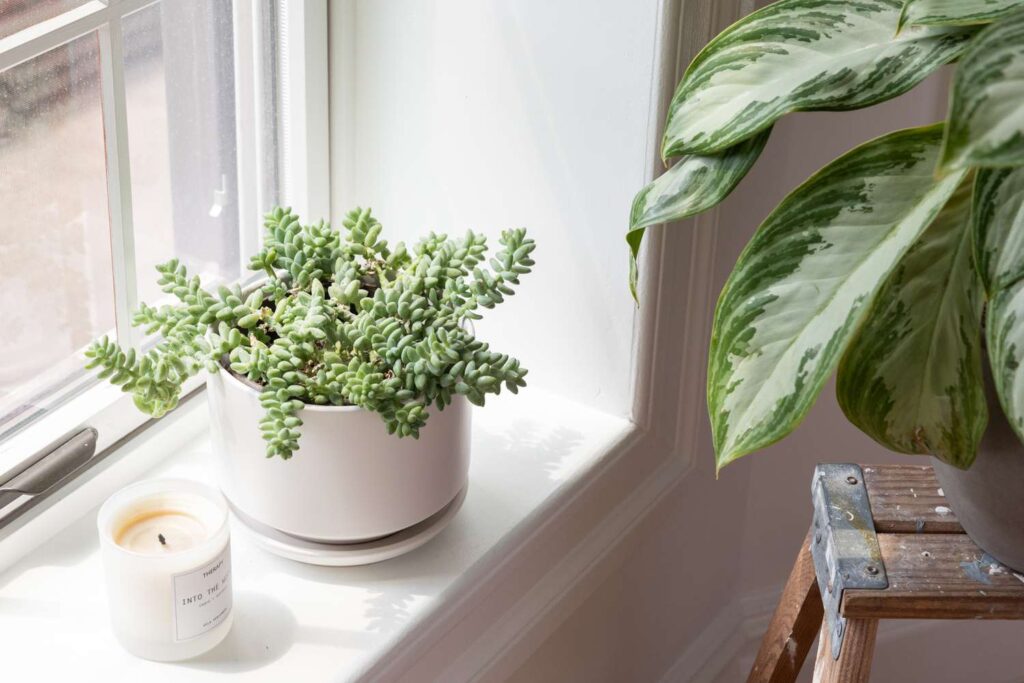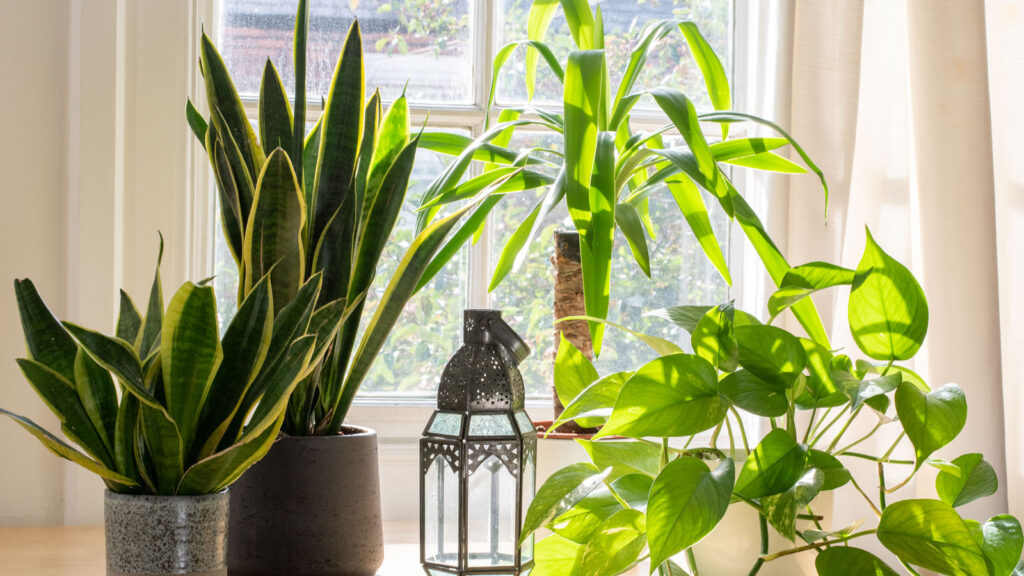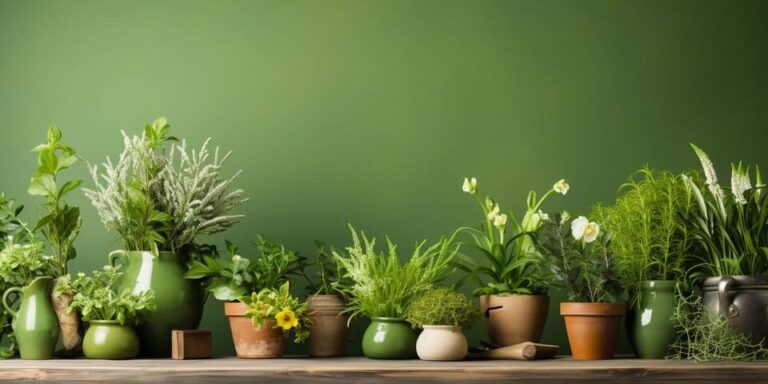Contents
Introduction
Choosing the right plants for your apartment isn’t just about picking the prettiest ones you see at the store. It’s about finding plants that will thrive in the specific conditions of your living space. The right choice can bring a splash of green to your home, boost your mood, and even help clean the air you breathe. On the flip side, picking plants that aren’t suited to your apartment’s environment can lead to droopy leaves, yellowing, and a lot of frustration.
So, what makes a plant “right” for your space? It’s all about understanding your apartment’s unique climate. And don’t worry, you don’t need a degree in botany to get this right. We’re talking about a few simple factors like light, temperature, and humidity—things that are easy to figure out with a bit of guidance.
First up, let’s talk about light. Every plant has its own light preferences. Some love bright, direct sunlight, while others are perfectly happy in low-light corners. Understanding how much natural light your apartment gets can help you choose plants that will flourish in your space.
Next, temperature and humidity play a big role. Plants are pretty sensitive to these factors. If your apartment tends to be warm and dry, you’ll need plants that can handle that. Conversely, if your space is cooler or more humid, some plants will feel right at home.
In this guide, we’ll walk you through the basics of assessing your apartment’s climate, and then we’ll help you match it with the perfect plants. Whether you’re a seasoned plant parent or a complete newbie, you’ll find tips and tricks to keep your green friends happy and healthy. So, let’s dig in and get your apartment greenery sorted!
Understanding Your Apartment’s Climate
Before you go plant shopping, it’s important to get a handle on your apartment’s climate. Sounds fancy, but it’s really just a way of figuring out what kind of environment your plants will be living in. Don’t worry, it’s easy! We’re breaking it down into a few simple steps to help you understand how light, temperature, and humidity affect your plant choices.
Assessing Light Conditions
Let’s start with light. Plants are like people—they need different amounts of light to thrive. Some love basking in bright, direct sunlight, while others prefer a shadier spot. Here’s how you can figure out what kind of light your apartment offers:

- Natural Light vs. Artificial Light: Check if your space gets a lot of natural light from windows or if you rely more on artificial lighting. Natural light is usually best for plants, but if you’re low on sunlight, you can always use grow lights to help your green buddies out.
- Light Intensity and Duration: Notice how strong the sunlight is and how long it shines in different areas of your apartment. A south-facing window usually means plenty of light, while a north-facing window might offer just a bit. You can also use a simple light meter or even just your own observations to gauge this.
Evaluating Temperature and Humidity
Next up is temperature and humidity. These factors can really affect how well your plants grow:
- Typical Temperature Ranges: Most indoor plants are pretty adaptable to the average temperatures found in homes. Just make sure to keep an eye on extreme changes, like hot blasts from heaters or chilly drafts from windows, which can stress your plants out.
- Humidity Levels: Humidity is a bit trickier but important. Some plants, especially tropical ones, love high humidity, while others are okay with dry air. You can measure your apartment’s humidity with a simple hygrometer or by just feeling if the air seems dry or moist. Adding a humidifier or placing a tray of water near your plants can help boost humidity if needed.
Air Circulation
Finally, don’t forget about air circulation. Good airflow is essential for plant health. Stagnant air can lead to problems like mold or pests, so it’s a good idea to keep your apartment’s air moving a bit:
- Importance of Good Airflow: Plants need fresh air to stay healthy, just like we do. Good air circulation helps prevent diseases and pests.
- Addressing Stagnant Air Issues: If you notice that your apartment has a lot of still air, consider using a small fan to help with circulation or simply open windows regularly to let in fresh air.
With these basics covered, you’re well on your way to creating a happy home for your plants. Understanding your apartment’s climate might seem like a lot of work, but it’s really just about knowing your space and choosing plants that will thrive there. Now that you’ve got the scoop on light, temperature, humidity, and airflow, you’re ready to find the perfect plants for your green oasis!
Choosing Plants Based on Light Conditions
Alright, you’ve got a handle on your apartment’s climate—now it’s time to pick the right plants based on the light they’ll get. Different plants have different light needs, so matching them to your apartment’s lighting conditions is key to keeping them happy and healthy. Let’s break it down into easy-to-follow categories so you can find the perfect green friends for your space.

Low Light Plants
Not every corner of your apartment is bathed in sunlight, and that’s okay! There are plenty of plants that thrive in low-light conditions, making them perfect for those shadier spots:
- Snake Plant (Sansevieria): This plant is practically foolproof and loves low light. Its tall, upright leaves add a modern touch to any room. Plus, it’s super low-maintenance and can go without water for a while.
- Pothos (Epipremnum aureum): Another great choice for low light is Pothos. It has trailing vines that look great in hanging baskets or shelves. It’s also very forgiving if you occasionally forget to water it.
Medium to Bright Indirect Light Plants
If you’ve got spots in your apartment that get medium to bright, indirect light (like near a window with filtered sunlight), you’re in luck! There are lots of plants that love these conditions:
- Spider Plant (Chlorophytum comosum): This plant’s arching leaves and little plantlets make it a fun addition to any room. It does well in medium to bright light and is easy to care for, making it a great choice for beginners.
- ZZ Plant (Zamioculcas zamiifolia): ZZ plants are perfect for medium to bright indirect light. Their glossy, dark green leaves add a touch of elegance, and they’re very low-maintenance. They’re great if you’re a bit forgetful about watering.
Direct Sunlight Plants
If you’re lucky enough to have spots that get lots of direct sunlight, you can choose from a variety of plants that love soaking up those rays:

- Succulents: These hardy plants thrive in bright, direct sunlight. Their thick, fleshy leaves store water, so they’re perfect for sunny windowsills. There are tons of varieties, from the popular Echeveria to the quirky Haworthia.
- Cactus: Like succulents, cacti are designed to handle lots of sun. They’re great for very bright spots and need minimal water. Plus, their unique shapes can add a bit of desert charm to your decor.
So there you have it! By matching your plant choices to the light conditions in your apartment, you’ll help ensure they grow healthy and strong. With options for low light, medium to bright indirect light, and direct sunlight, you’re sure to find plants that fit perfectly into every nook of your home. Happy plant shopping!
Choosing Plants Based on Temperature and Humidity
Now that you’ve got a handle on your apartment’s light conditions, it’s time to consider temperature and humidity. These factors can make a big difference in how well your plants grow. Let’s dive into how you can choose the best plants for your specific temperature and humidity levels, making sure your green friends are as happy as can be.
Temperature-Tolerant Plants
Most apartments have a pretty stable temperature, but some areas can get a bit too hot or too cold. Fortunately, many plants are quite adaptable. Here’s how to pick plants that can handle the typical temperature ranges in your apartment:
- Peace Lily (Spathiphyllum): This plant is known for its beautiful white flowers and glossy green leaves. Peace Lilies thrive in average room temperatures and can handle a bit of fluctuation. They’re also pretty good at adjusting to various light conditions, though they prefer indirect light.
- Boston Fern (Nephrolepis exaltata): Boston Ferns are great for slightly cooler areas and add a lush, tropical feel to your space. They like temperatures on the cooler side and can handle a bit of draftiness, making them perfect for rooms with varying temperatures.
Humidity-Loving Plants
If your apartment has a bit of a tropical feel, with higher humidity, you’ll want plants that thrive in those conditions. Many houseplants come from tropical regions and love a bit of extra moisture:
- Orchid (Orchidaceae): Orchids are stunning and enjoy a humid environment. They’re great for adding a touch of elegance to your home and prefer higher humidity levels. Just keep them away from cold drafts and provide a bit of humidity to keep them happy.
- Calathea (Calathea spp.): Calatheas are known for their striking foliage and love high humidity. They’re perfect for bathrooms or kitchens where moisture levels are naturally higher. These plants can be a bit more finicky about humidity, so keep them in a spot where they’ll get the moisture they need.
Low Humidity Plants
If your apartment is on the drier side, you’ll need plants that can handle lower humidity levels. These plants are a bit more tolerant of dry air and won’t need constant moisture to stay healthy:
- Aloe Vera: Aloe Vera is a great choice for dry environments. It has thick, fleshy leaves that store water, making it perfect for low-humidity conditions. Plus, it’s easy to care for and can be used for its soothing gel.
- Jade Plant (Crassula ovata): Jade Plants are another good option for dry air. They’re succulents, which means they’re designed to handle less moisture and can thrive in low-humidity conditions. Their shiny, rounded leaves add a touch of green to any space.
By considering the temperature and humidity levels in your apartment, you can choose plants that will not only survive but thrive in their new home. Whether your space is cooler, warmer, or has a bit of extra moisture, there’s a perfect plant out there for you. Keep these tips in mind, and you’ll have a vibrant, healthy indoor garden in no time!
Practical Tips for Maintaining Plant Health in Your Apartment
Once you’ve chosen the perfect plants for your apartment’s climate, it’s time to keep them thriving. Maintaining plant health doesn’t have to be complicated; with a few simple practices, you can ensure your green friends stay happy and healthy. Here’s a guide to help you with watering, fertilizing, pest control, and adapting to seasonal changes.
Regular Watering and Fertilization
Plants need a bit of TLC to stay in top shape, and watering and fertilization are key parts of that care:
- Watering Schedules: Different plants have different watering needs, so it’s important to find a routine that works for each type. Some plants prefer to dry out between waterings, while others like to stay consistently moist. A good rule of thumb is to check the top inch of soil—if it’s dry, it’s time to water. Setting a reminder or using a watering app can help you stay on track.
- Fertilization Best Practices: Plants need nutrients to grow, and that’s where fertilization comes in. Use a balanced fertilizer to give your plants a boost. Follow the instructions on the package for how often to fertilize, as over-fertilizing can be just as harmful as under-fertilizing. Generally, feeding your plants once a month during their growing season is sufficient.
Pest Control
Keeping pests at bay is crucial for healthy plants. Here’s how to handle common pests and keep your plants pest-free:
- Common Apartment Plant Pests: Look out for pests like spider mites, aphids, and mealybugs. These tiny critters can cause big problems if not managed. Regularly check the undersides of leaves and the soil for signs of infestation.
- Organic Pest Control Methods: If you spot pests, try using natural remedies first. Neem oil, insecticidal soap, and homemade solutions like a mixture of water and dish soap can help control infestations. Regularly cleaning your plants and keeping them in good condition can also prevent pests from setting up shop.
Seasonal Adjustments
Plants may need a bit of extra care as seasons change. Here’s how to adjust their care for different times of the year:
- Adapting to Seasonal Changes: As the seasons shift, your apartment’s light, temperature, and humidity levels might change. Be prepared to adjust your plant care accordingly. For example, in winter, you might need to water less frequently as plants’ growth slows down and indoor air becomes drier.
- Preparing Plants for Seasonal Shifts: Before big seasonal changes, check your plants to see if they need repositioning. In summer, they might enjoy a bit more light, while in winter, you might need to move them closer to a light source. Keep an eye on temperature fluctuations and adjust watering routines as needed.
With these practical tips, you’ll be well-equipped to keep your plants thriving all year long. Regular watering, smart fertilization, proactive pest control, and seasonal adjustments are key to maintaining a healthy indoor garden. Enjoy the process, and your plants will reward you with lush, vibrant growth!
Conclusion
So, there you have it—everything you need to know to choose and care for the right plants in your apartment. Finding the perfect green companions involves understanding your space’s light, temperature, and humidity, and then matching those conditions with plants that will thrive in them.
Here’s a quick recap:
- Understand Your Space: Figure out how much light your apartment gets, what the temperature and humidity levels are like, and make sure your plants will be comfortable in those conditions.
- Choose Wisely: Pick plants that match your apartment’s light conditions, whether they need low light, medium to bright indirect light, or direct sunlight. Also, consider their temperature and humidity preferences to ensure they’re a good fit.
- Care for Your Plants: Stick to a watering schedule, fertilize appropriately, and keep an eye out for pests. Be ready to adjust your plant care routine as the seasons change to keep your plants happy year-round.
Remember, the joy of indoor gardening comes from experimenting and discovering what works best for your unique space. Don’t be afraid to try different plants and learn from your experiences. Over time, you’ll find the perfect combination of plants that bring beauty and freshness to your home.
For more tips and inspiration on indoor gardening, check out additional resources or visit local plant shops to discover new plant varieties and get expert advice. Happy planting, and enjoy the lush, green environment you create in your apartment!



